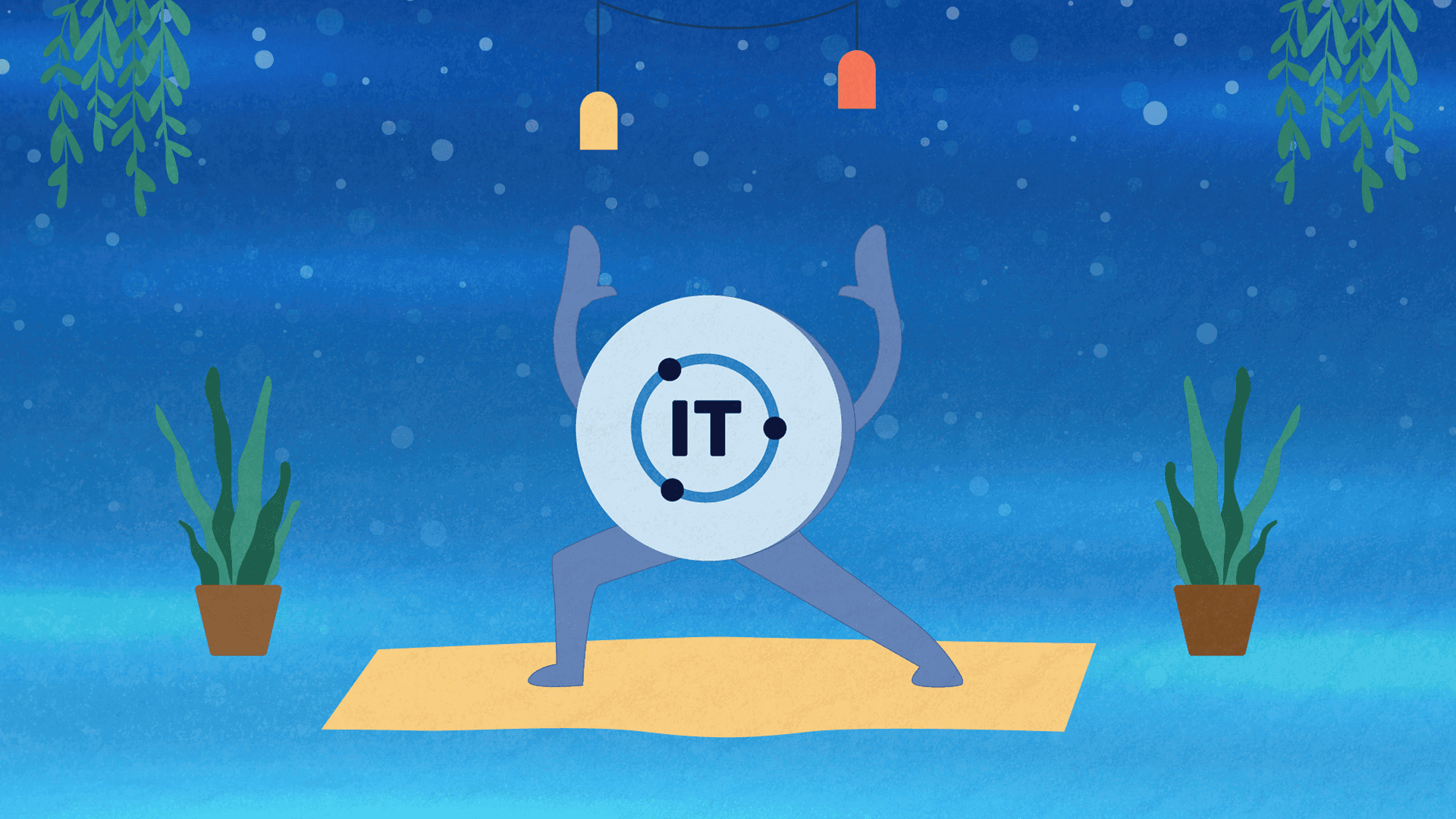SharePoint 2021: Why Intranets Will Continue to Impress

As we slowly wrap up 2020, we at Share IT like to take some time to think about what the near future has in the store for us. Like many other people who develop software for a living, we reserve the second half of December for predicting new trends in technology and business.
To do that effectively, we first need to zoom out from our day-to-day operations and reflect on the major moments that we have experienced during these last 12 months.
One thing we can all agree upon from the start: 2020 was a strange year. The arrival of the COVID-19 virus had an unprecedented impact on every type of industry, market, and company. It forced us to rethink all of our plans and spend lots of time in isolation.
Even though the virus brought a lot of challenging moments to our lives, two main things flourished during this time:
- Digital transformation
- Digital innovation
The Unexpected Push Towards Digital

We at Share IT worked hard during these last 12 months with a lot of businesses who were trying their hardest to adapt to the “new normal” and optimize their operations by adjusting their sails to the new winds.
In 2020, we built a lot of solutions for various customers using SharePoint. Using SharePoint intranet portal development, you can easily create a site and subsites for your departmental collaboration requirements. But it is equally important to periodically evaluate the progress of the intranet portal once it is implemented.
During these last 12 months, we developed an even stronger bond with this Microsoft’s product. We humbly believe we’re still just scratching the surface of SharePoint’s intranet portal development possibilities.
The Almighty SharePoint’s Intranet
As you’re probably aware if you've been following our blog closely in 2020, we already wrote about SharePoint’s Intranet and why we love it. In that post (among other things), we underlined why we felt that SharePoint’s Intranet is the best corporate collaboration solution that offers a wide array of possibilities.
Since 2001 when SharePoint first entered the scene, the product has gone through lots of iterations. Because of the love and care that was invested into its development, SharePoint quickly earned a reputation for being a leader in its category. It brought a lot of innovations and flexibility when it comes to secure content collaboration and data sharing.
Custom SharePoint has become a no.1 solution for a lot of businesses. Believe it or not, but, according to W3Techs, 0.1% of all the websites use SharePoint. Yes, this number by itself doesn’t look impressive, but when you remember that there are 6 billion indexed websites today and you do the math and figure out how much is 0.1% of that - you’ll see there are many websites out there built with SharePoint.
With SharePoint, companies are given the option to design the look and feel of their SharePoint environment in any way they please simply by using the SharePoint server which is installed on the client’s IT infrastructure.
There are lots of companies out there who have proven that SharePoint’s Intranet can become almost anything if given to the right people.
In addition to keeping all the essential company and employee information at a single, secure space, we have seen lots of cases where Intranet portals have been transformed into project management, contract management, board management, and help desk solutions as well.
With just a little imagination and smart development, Intranet portals can become a one-stop solution for almost all enterprise-level business needs.
The year 2021 is going to be a huge year for SharePoint developers because investing in smart software solutions that simplify processes and enable a steady, seacure, and easy flow of relevant information has become imperative to the growth and success of all businesses.
Let’s break down some of SharePoint Intranet’s main points that make it such an interesting tool for building a wide array of different enterprise solutions:
1. Design Options / Endless Flexibility

For the sake of keeping this segment brief, let’s just focus on Intranet’s homepage and what we can do with it.
The homepage is arguably the most important piece of the puzzle. When users log in to the Intranet portal, this is the first thing they see. The design of the interface is totally up to you.
A good place to start is to think about what information you want to highlight and what actions you want to provoke. That’s how you’ll make the first step toward optimally utilizing your Intranet portal.
For most companies, the homepage of their Intranet portal is developed in a way that highlights important company news, achievements, or displays other announcements.
However, as we wrote above, that is just one of the many use cases.
The point here is flexibility. You can manipulate your portal in any way you like. You can make it fit any specific business environment, working pace, collaboration style and ensure it reflects your corporate values. That’s what keeps SharePoint selling and what will keep it on the top of almost every collaboration software solution list in 2021.
2. A Swiss Army Knife for Every Work-Related Process
Microsoft doesn’t have any plans to stop deriving its on-premise servers for SharePoint. With SharePoint, every company that pays for this service has a platform for creating functional intranet pages fast without being forced to do any coding or handle complex customizations.
Intranet portals look and play well with all devices and screens. They are easy to manipulate and they provide users with pleasant experiences by default.
SharePoint Server enables businesses to do so much more with their Intranet portals than just build static pages. You can create responsive, dynamic pages with zero prior tech knowledge. You don’t even need to have to request support from the IT team to maintain your solution.
To create a working SharePoint Intranet, all you need to do is:
- List your companies key priorities that need attention
- Figure out who are the end users for the solution you’re building
- Plan for governance
- Map out and prioritize business initiatives
- Build a pilot project
- Launch it and see how it resonates with the users
Once you do that, you will see if there’s actually a need to build custom solutions. If the basic offering doesn’t cut it or if you have complex goals you want to achieve with the Intranet, you can start conversing with people who will be able to help you build outside of the box stuff. Think unique project management solutions, internal wikis, learning management systems, etc.
Lots of strategic thinking and planning goes into building a successful SharePoint intranet portal. So many things can go wrong, if you don’t pay attention. To make sure that you have built something that actually fulfills your unique needs, you need to regularly collect feedback from users and update the intranet portal in accordance to how they feel about it. If you want to ensure the proper adoption of the intranet portal at your organization, you have to monitor closely how it is performing and make the necessary changes when people request so.
Flexibility and scalability are the top features of SharePoint. As your organization restructures and your strategic priorities change over time, your Intranet can evolve as well.
3. Great Home for Your Content

When we zoom out and look at this solution from a distance, we can conclude that, in a nutshell, SharePoint Intranets are about content. The product was designed with a goal to become a sophisticated content publishing and management solution for businesses who are focused on safety of their information and elevating their internal communication to the next level where it can be properly managed.
Although communication sites have helped bring more publishing capabilities to SharePoint and made it even more powerful by including features like approval workflows, news templates, and editorial calendars - the tool still leads the market in the internal content sharing and management domain.
Microsoft still heavily invests in the development of SharePoint and SharePoint Online. The company is focused on bringing modern experiences to the mix and enriching their Intranet solution with out of the box capabilities that support the development of intelligent internal sites with numerous possibilities.
We’re excited to see what Microsoft will bring us in 2021. If you want to jumpstart the year properly and invest in SharePoint for your internal needs, contact us today: we’ll be more than happy to share some of the industry best practices and explore how we can work together.